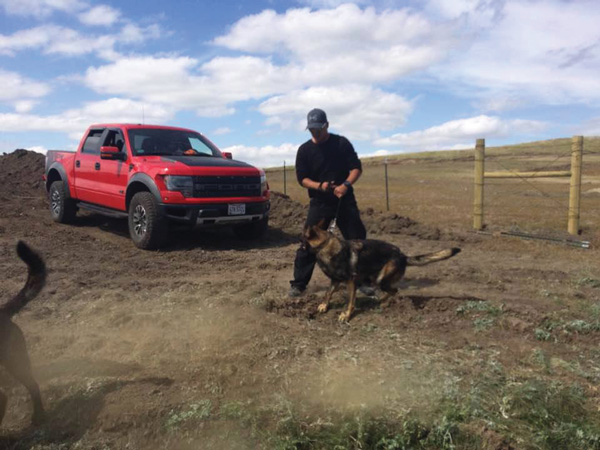News & Articles
Browse all content by date.


There is no doubt that we live in times where news moves fast and sometimes significant historical events don’t get the attention they deserve. Since April 1, 2016, a small camp of Native Americans around Cannon Ball, North Dakota has grown from a few to peaking at several thousands in recent weeks in protest of the Dakota Access Pipeline, a $3.8 billion project that runs just a few short miles from Native American treaty territories. The group of people gathered comprises of those from all walks of life, but over 60 tribes of Native Americans have gathered in solidarity against the pipeline making up a large number of those camped out. Those who have gathered view themselves not so much as protesters, but rather as protectors of their land and the water that flows through and around it. “We are protectors, not protesters,” said Lish LaBarge a woman from Cloquet who has just returned from the camp and plans to return soon. While the parent company, Energy Transfer Partners, has a lot of money riding on the project, as well as a reported $1.5 billion investment on the part of Enbridge, after recent developments last weekend, it’s hard to not wonder exactly who is in the right and within the law. When looking back through history, all the way back to when Native Americans were killed over the very same land, to the violence that occurred through out the civil rights movements of the 1960s, the question arises, who is on the right side of history here?
While the protesters of the Sacred Stone Camp have vowed to be peaceful, that doesn’t mean that they haven’t faced physical threats and other tactics to get them to stand down. On Saturday, September 3, things escalated when a security company used pepper spray and other chemical agents on 30 protesters and proceeded to release dogs into a crowd resulting in injuries to six including a pregnant woman and a child. Images of a female handler holding back her German Shepherd with its blood soaked muzzle shows a sickening similarity to a time where police released dogs on African Americans during the civil rights movement.
There stands some stark contrast between what is being posted by those actually present among the protectors and alternative media between what more mainstream sources such as the Duluth News Tribune have released. “Any suggestion that today’s event was a peaceful protest is false. This was more like a riot than a protest,” said Morton County Sheriff Kyle Kirchmeier, as stated in the DNT on September 4, originally from the Bismarck Tribune. We found it somewhat odd that numerous other sources told quite a different story, and it’s interesting that the DNT would run a story with the first quote being from a Sheriff who was not present at the altercation, nor were any of his deputies. The Sheriff tells of secondhand information from a nameless security company whose actions from the incident are questionable at best.
We had the chance to talk with Reyna Crow who happened to be on the front lines of what was supposed to be a prayer vigil, not a riot as the Sheriff suggests. “We were on the site for a commemoration of the massacre that had happened that day 153 years before. We had no expectations that there would be anybody there,” said Crow a Twin Ports area activist who was out there visiting the camp and witnessing what was happening. The group that went out from the camp would have had no reason to expect anyone was out there because it not only was Labor Day weekend, but that specific area had just been declared as an indian burial ground and of archaeological significance just the day before. Jan Hasselman, an attorney with Earthjustice representing the Standing Rock Sioux Tribe explained to Amy Goodman of Democracy Now the situation, “On Friday afternoon, we filed some very important evidence in the lawsuit about the discovery of some sacred and major culturally significant sites that were directly in the pipeline’s route. And it was miles away from where any construction was happening. And we filed this evidence with the court Friday afternoon in order to support our claim that there should be a timeout on construction until some of these legal issues can get resolved. We were stunned and shocked to hear that they took that information and, Saturday morning, over a holiday weekend, went out and bulldozed the entire site.” The action by the company is being called a “fait accompli” or “a thing that has already happened or been decided before those affected hear about it, leaving them with no option but to accept.”
Needless to say, what the group stumbled upon was upsetting, but did not result in violent action on those there originally for a prayer vigil, although there inevitably was a confrontation. “These guys had dug a two mile, 150 yard wide scar into the earth already. When that was noticed, I definitely made the choice to breach the line, but there was no effort to organize a riot…they were immediately pepper spraying people, I counted six or seven dogs. They are the ones that planned confrontation or at least were prepared for one, not us. I think it’s just ridiculous to call it a violent riot on our part.” Crow retreated after being pepper sprayed, returned to the camp, and was brought to a hotel room from there to wash off the chemicals. LaBarge concurs, “We didn’t start anything. Period. The bulldozers and helicopter did.”
Since the incident a federal judge has put a temporary stop to parts of the pipeline. While no arrests were made there were claims by the security company that has no name through Sheriff Kirchmeier who was not there that “Individuals crossed onto private property and accosted private security officers with wooden posts and flag poles.” There was also mention of Native Americans brandishing knives and hatchets. At least at the time of the group confronting the bulldozers and the security personnel with the dogs, from the numerous clips of footage that we have seen, this seems to not be the case. Those handling the dogs seemed to be quite unprofessional that day and their dogs were out of control and can be seen attacking not only the protesters, but horses and their own handlers. Democracy Now’s, Amy Goodman said, “We interviewed one person after another who were bitten by dogs. And as one of the security was holding the dog, whose mouth and nose were dripping with blood, I said to her, ‘Your dog is biting protesters.’ She simply moved down the line, and the dog moved on to attack more of the Native Americans who were there.” Goodman interviewed a canine expert, Jonni Joyce, who watched footage of the incident and said, “And then there were about six protesters that were, oh, approximately 15 feet in front of her, and without the protesters moving forward or making any aggressive act towards her, she pushed her dog into the crowd. And you can see on the video that the dog had enough sense not to go in the crowd. The dog actually backed up. And then she corrected the dog and pulled the dog into the crowd. And this is especially concerning, in reference to this application of the use of force, and it certainly provides evidence that these people were improperly trained.”
It looks like those camping near the site are looking at staying for the long haul, even through the winter if necessary. There is a constant supply of food, water and other necessities for the camp. While last weekend was certainly intense for all of those involved, Crow noted, “this was one hour out of how many weeks that people have been camping there that have been completely peaceful, everyone’s needs are being met.”
It certainly seems that those either protesting the pipeline or protecting the land and water, while steadfast, are not the ones inciting violence. For now, the Federal Courts are making sure that those who have been peaceful are not further provoked.
| Tweet |


